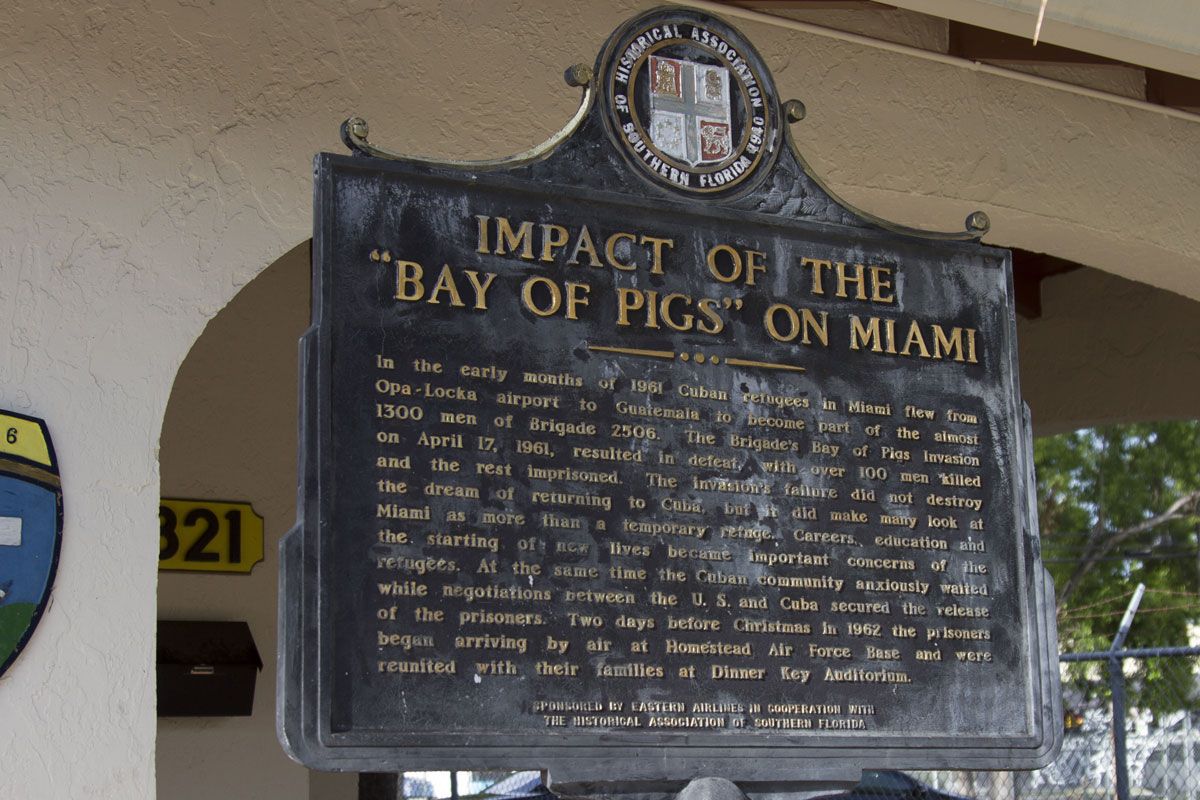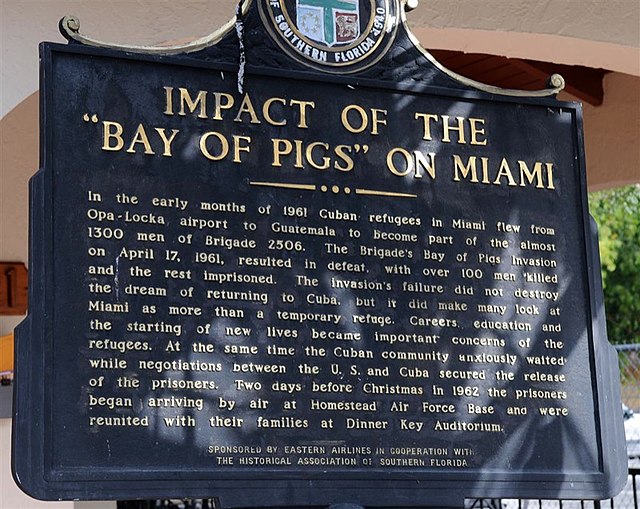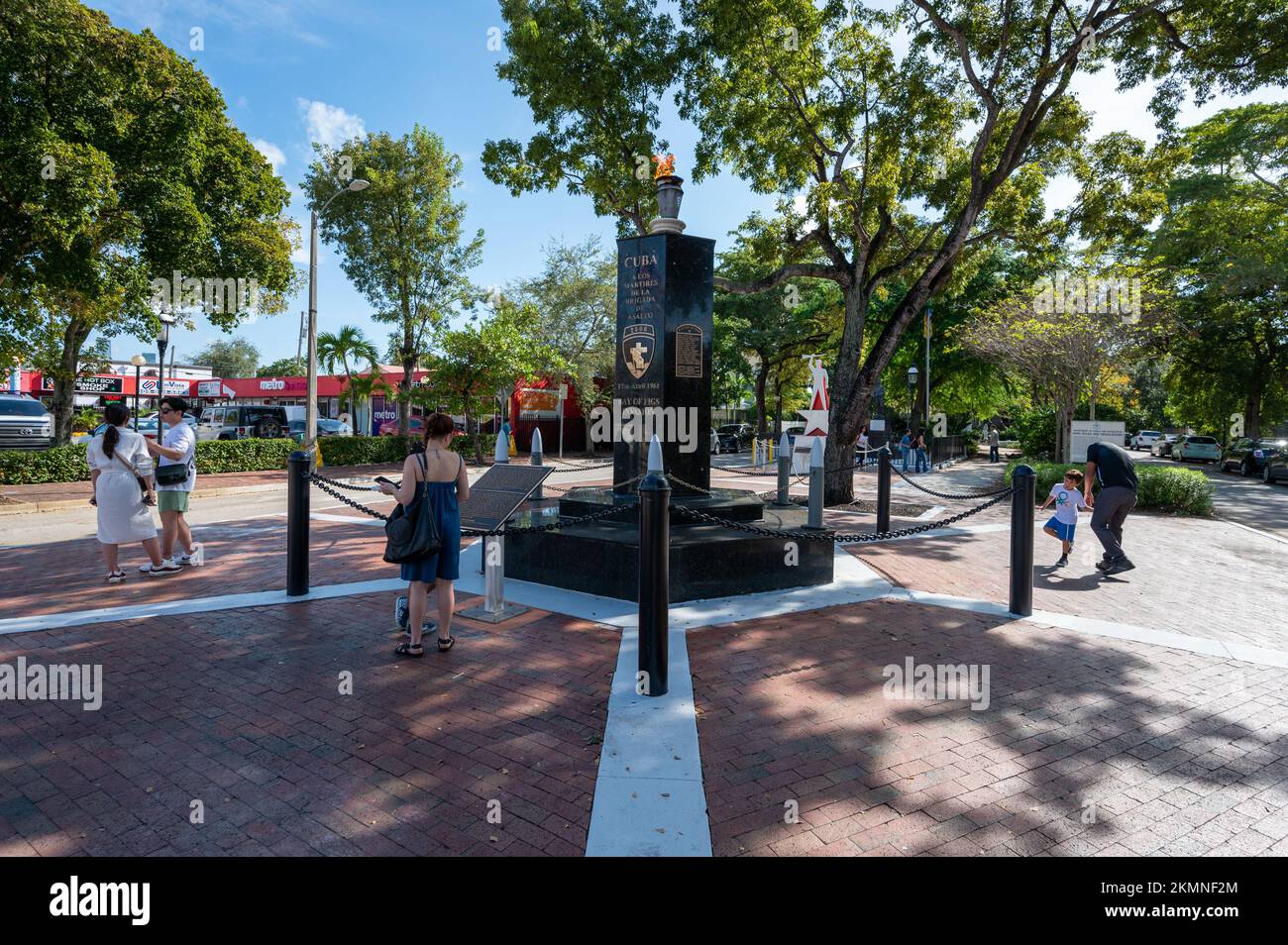Start an Experience: Your Ultimate Bay of Pigs Monument Tour Guide
Start an Experience: Your Ultimate Bay of Pigs Monument Tour Guide
Blog Article
Discovering the Relevance of the Bay of Pigs Monument in Historical Memory
As an architectural manifestation of the Bay of Pigs Intrusion, this monument encapsulates not just the occasions of that fateful episode however likewise the facility web of political, social, and cultural effects that border it. By diving right into the layers of significance ingrained within this monolith, one can start to unravel a narrative that goes beyond plain historic documentation, using a home window into the enduring tradition of the Bay of Pigs Intrusion and its lasting impact on both the Cuban-American partnership and wider historic awareness.
Historic Context of Bay of Pigs Intrusion
During the height of the Cold War in April 1961, the Bay of Pigs invasion marked a zero hour in the recurring tensions between the United States and the Soviet Union. The invasion was a failed attempt by the U.S.-backed Cuban expatriations to topple Fidel Castro's communist federal government in Cuba. The operation, which had been planned under the Eisenhower administration and performed under Head of state John F. Kennedy, was a substantial problem for the United States.
The Bay of Pigs invasion not just stretched relationships in between the united state and Cuba yet likewise increased the displeasure in between the U.S. and the Soviet Union. The Soviet Union saw the invasion as a direct danger to its visibility in Cuba and subsequently enhanced its support for the Cuban government, leading to the Cuban Projectile Crisis the list below year.
Construction and Layout of the Monument
The building design of the Bay of Pigs Monolith personifies a mix of symbolic aspects that reflect the complex historic relevance of the occasion. Situated in Miami, Florida, the monolith stands as a homage to the men that fearlessly battled in the Bay of Pigs invasion. The framework, created by distinguished architect Manuel J. Diaz, integrates symbolic features such as a main tower getting to towards the skies, signifying the goals of those who looked for to free Cuba from communist guideline.
The monument's building and construction used products that evoke a sense of stamina and resilience, with using resilient rock and concrete. The design of the monument consists of a circular plaza embellished with plaques outlining the names of the dropped soldiers, enhancing the somber and reflective atmosphere of the website. Additionally, the incorporation of Cuban and American flags linked at the base of the column signifies the unity and common background in between the 2 nations during this tumultuous duration. Generally, the design of the Bay of Pigs Monument functions as a touching suggestion of the sacrifices made during the intrusion and the withstanding tradition it keeps in historical memory.

Political Symbolism and Controversies
Political undertones and conflicts surrounding the Bay of Pigs Monument have actually stimulated debates among scholars and political experts alike. The monolith's building and construction in Miami, a city with a substantial Cuban-American population, has actually led to differing interpretations of its meaning. For some, the monolith stands as a homage to the fearlessness and sacrifice of the Cuban exiles who got involved in the fallen short intrusion. It works as a reminder of the Cold Battle battles versus communism and the United States' commitment to supporting anti-Castro forces.
However, for others, the Bay of Pigs Monument represents a more controversial position. Critics argue that the monument glorifies a dark chapter in united state diplomacy, highlighting a stopped working hidden operation that strained diplomatic relations and had long lasting repercussions. Additionally, some view the monolith as a political declaration versus the Cuban federal government, perpetuating stress in between both countries.

Influence on Cuban-American Relations
In the middle of the diverse analyses of the Bay of Pigs Monolith's importance, its presence in Miami serves as a centerpiece for evaluating the complicated dynamics that have actually affected Cuban-American connections. The monument, erected to memorialize the failed intrusion of Cuba by ousted Cuban boxers supported by the CIA in 1961, stands as a reminder of the stretched historic connection between both countries.
The Bay of Pigs invasion noted a pivotal minute in Cuban-American relationships, resulting in heightened stress and an enduring effect on diplomatic communications. For Cuban-Americans, the monument signifies resilience and the battle for flexibility versus the Cuban government. On the other hand, for numerous Cubans on the island, it stands for a plain suggestion of U.S. interventionism and hostility.

Collective Memory and Historical Narratives
Checking out the intertwining strings of cumulative memory and historic stories bordering the Bay of Pigs Monument reveals elaborate layers of interpretation and relevance. In the instance of the Bay of Pigs Monolith, this collective memory is formed by different stories that have actually arised over time.
Historic narratives play a critical role in shaping collective memory. They offer a framework whereby events like the Bay of Pigs invasion are comprehended and analyzed by culture. These stories can progress in time, mirroring changing perspectives and interpretations of the past. The Bay of Pigs Monument functions as a physical personification of these stories, preserving them for future generations to show upon. By analyzing the relationship between cumulative memory and historic narratives, we can gain a deeper understanding of how occasions like the Bay of Pigs intrusion proceed to resonate in the present day.
Conclusion
To conclude, the Bay of Pigs monolith stands as a prominent symbol of the fallen short intrusion and its long lasting effect on Cuban-American relationships. Its construction and style reflect the political meaning and conflicts surrounding the event, forming cumulative memory and historical stories. By discovering the importance of this memorial, we obtain deeper insight into the intricacies of Cold War history and the enduring tradition of this turning point in worldwide connections.
By diving right into the layers of value embedded within this monument, one can start to untangle a story that goes beyond mere historical paperwork, using a home window right into the sustaining legacy of the Bay of Pigs Intrusion and its lasting impact on both the Cuban-American connection and wider historical awareness.
The building layout of the Bay of Pigs Monolith personifies a mix of symbolic components that show the complicated historic relevance of the occasion. On the whole, the layout of the Bay of Pigs Monolith offers as an emotional tip of the sacrifices made throughout the intrusion and the sustaining tradition it holds in historic memory.
Checking out the intertwining threads of collective memory and historical stories surrounding the Bay of Pigs Monument reveals intricate layers of interpretation and importance - Bay of Pigs Monument.In conclusion, the Bay of Pigs monolith stands as a noticeable icon of the stopped working invasion and its long-term effect on Cuban-American connections
Please visit one of our local supporters - Miami Pool Service Pros Pool Repair
Report this page